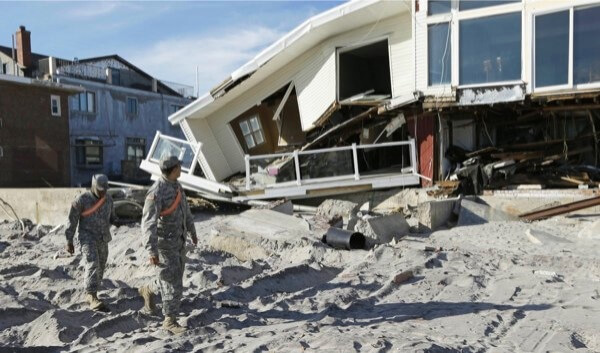By Patrick Donachie
Parts of New York City, including significant sections of the Rockaways and other parts of southern Queens, could potentially be inundated by a possible sea level rise projected for the coming century, according to a new study from the Regional Plan Association.
The study contends that while much attention has been paid to the damage that can be wrought by a severe, fast-moving storm such as Hurricane Sandy, the more gradual but permanent damage caused by a rise in the sea level has not been adequately addressed.
“Intermittent flooding recedes once a storm passes while sea level rise flooding is permanent and can be expected to encroach further inland over time,” the report stated in its introductory summary. “Sea level rise not only permanently alters the coast line. It also widens the area vulnerable to storm surge.”
The RPA is an independent research and advocacy organization that attempts to measure the health and economic stability of New York’s metropolitan region. The report analyses the potential threats to the New York, New Jersey and Connecticut metropolitan areas that are most at risk of permanent flooding, measuring the potential impact a 1, 3 or 6 foot rise in the sea level could have on communities. The report indicates sea levels could rise by one foot as early as the 2030s, with three feet possible as early as the 2080s and six feet conceivable by early next century.
In Queens, a handful of areas around Jamaica Bay could be endangered by sea level rise, particularly the Broad Channel neighborhood, which was battered during Hurricane Sandy. The report indicates that LaGuardia Airport could potentially see “nuisance flooding” during high tides if sea level rose one foot.
At a 3-foot-rise, communities along Jamaica Bay’s shores could be affected. The subway connection with the Rockaways would be endangered, and areas that were not inundated would be more susceptible to storm surge. At a 6-foot rise, Broad Channel would be entirely inundated, and much of the Rockaways would be in danger by the increased sea level. The report states more than 200,000 New Yorkers in Brooklyn and Queens live in areas that would be affected by the 6-foot sea level rise. Runways and terminals at LaGuardia could be entirely inundated, as well.
The report stressed the difference between the consequences of a storm like Sandy and a sea level rise, noting that while storms can leave momentous damage in their wake, their effects can be temporary. With a sea level rise, the process is slower but the water will not recede. The report urged local, state and federal government to consider the effects of a sea rise while planning to mitigate the destructive effects of any future superstorms.
Reach reporter Patrick Donachie by e-mail at pdona



































